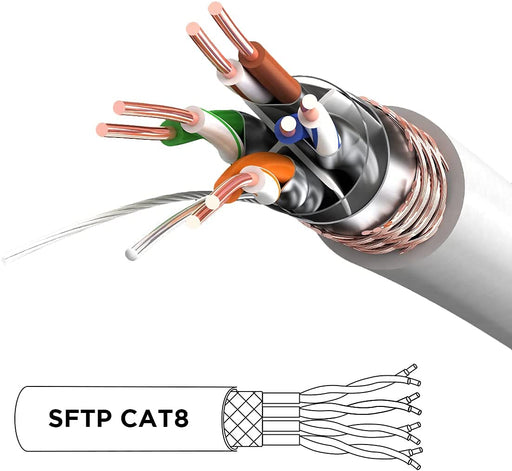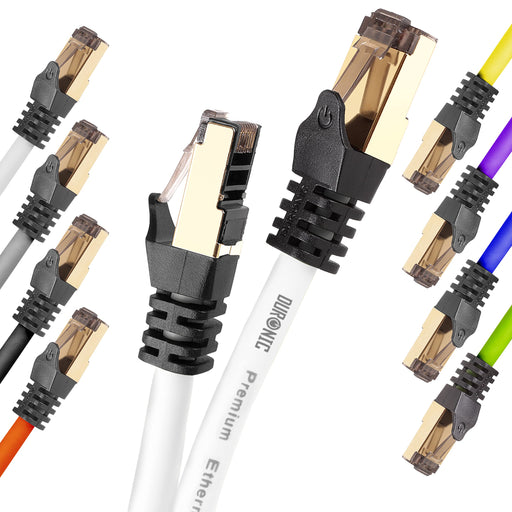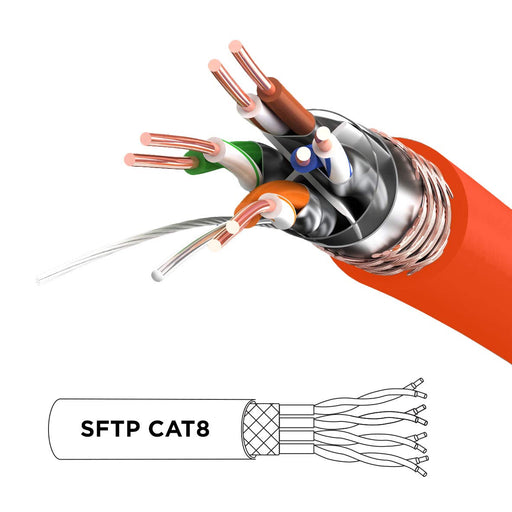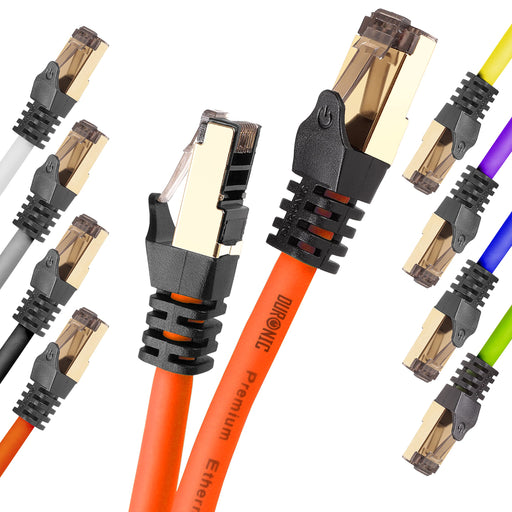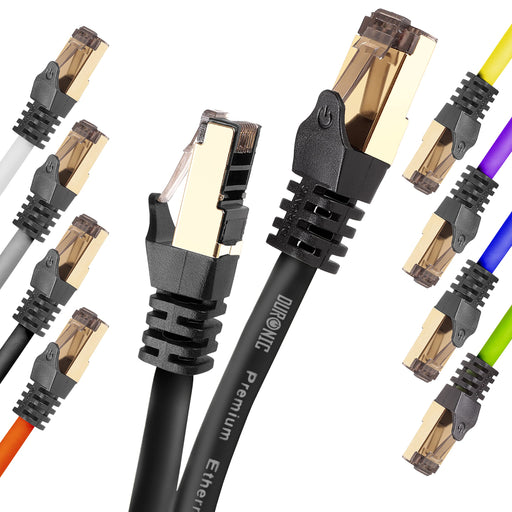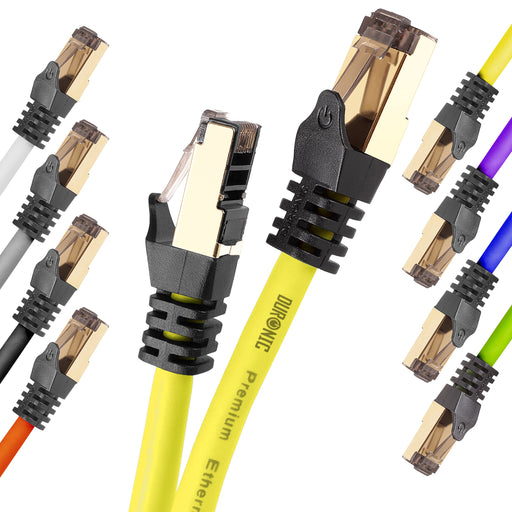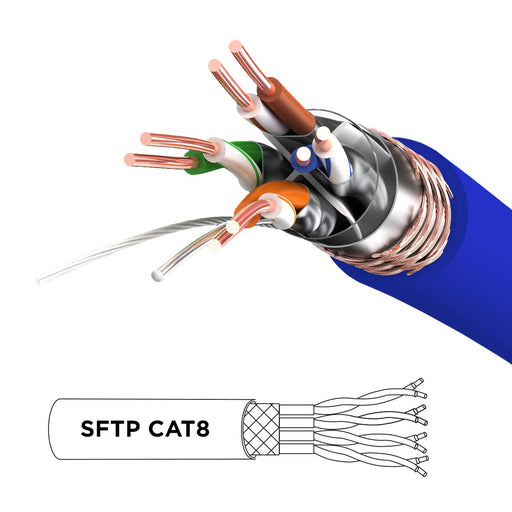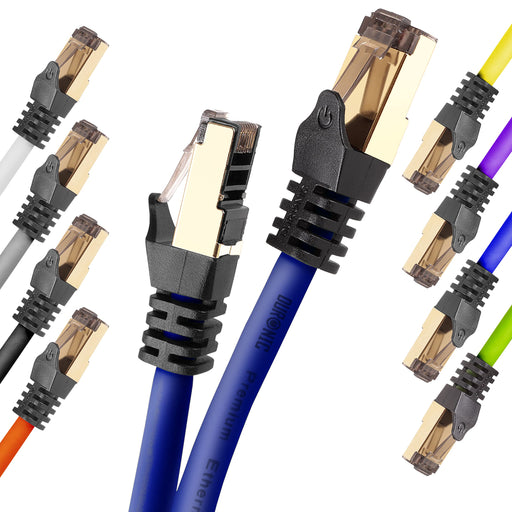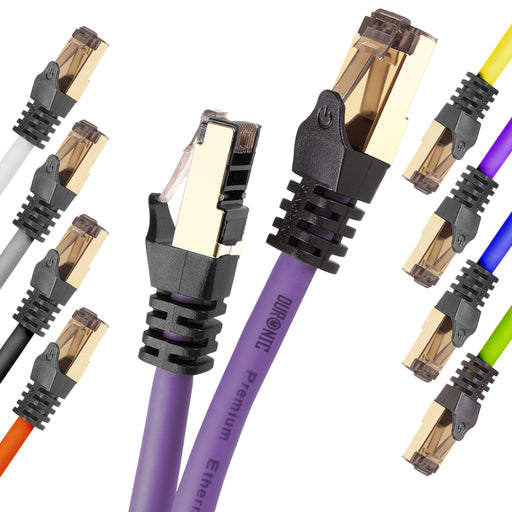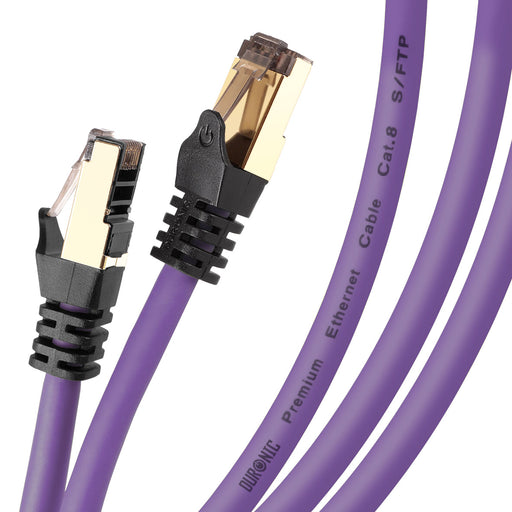Ethernet Cables
What is an ethernet cable and What does it do?
An Ethernet cable is a type of network cable used to connect devices to a local area network (LAN), enabling them to communicate with each other and access the internet. It is one of the most common ways to establish a wired connection between devices, such as computers, routers, switches, gaming consoles, and printers.
Functions of an Ethernet Cable:
-
Data Transmission:
-
Ethernet cables transmit data between connected devices within a network, allowing them to share information, access the internet, or communicate with each other.
-
Reliable and Stable Connection:
-
Wired connections via Ethernet cables are known for their stability and reliability, often providing faster and more consistent speeds than wireless connections (Wi-Fi).
-
Supports High-Speed Internet:
-
Network cables are capable of handling high-speed data transfer, which is essential for activities like streaming, gaming, video conferencing, and large file transfers.
-
Reduces Latency:
-
Because it provides a direct connection, a Lan cable minimises latency (the delay before data begins to transfer), making it ideal for online gaming, video calls, and other real-time applications.
-
Security:
-
Wired connections using internet cables are generally more secure than wireless connections because they are less susceptible to interference and unauthorised access.
Types of Ethernet Cables:
-
Cat5 (Category 5):
-
Older standard, supports speeds up to 100 Mbps (Megabits per second).
-
Cat5e (Category 5e):
-
An enhanced version of Cat5, supports speeds up to 1 Gbps (Gigabit per second) and is more resistant to interference.
-
Cat6 (Category 6):
-
Supports speeds up to 10 Gbps over shorter distances and has better performance and shielding against interference.
-
Cat6a (Category 6a):
-
An augmented version of Cat6, supports speeds up to 10 Gbps over longer distances with improved shielding.
-
Cat7 (Category 7):
-
Offers even better shielding and supports speeds up to 10 Gbps over longer distances, with potential for higher speeds.
-
Cat8 (Category 8):
-
The latest standard supports speeds up to 40 Gbps over short distances, typically used in data centres.
How does an ethernet cable work?
-
Physical Connection:
-
An Ethernet cable connects to the Ethernet ports on devices (e.g., a computer and a router). Once connected, it facilitates the transfer of data packets between these devices.
-
Data Transmission:
-
The network cable consists of twisted pairs of wires that reduce electromagnetic interference and ensure data is transmitted efficiently.
In Summary:
An Ethernet cable is a critical component for creating a wired network, providing fast, stable, and secure connections between devices. Whether for home use, gaming, or professional environments, Ethernet cables ensure reliable internet and network access.
Is an ethernet cable worth it?
Yes, an Ethernet cable is worth it, especially if you prioritise a fast, stable, and reliable internet connection - Ethernet cables generally offer faster and more consistent speeds compared to Wi-Fi.




